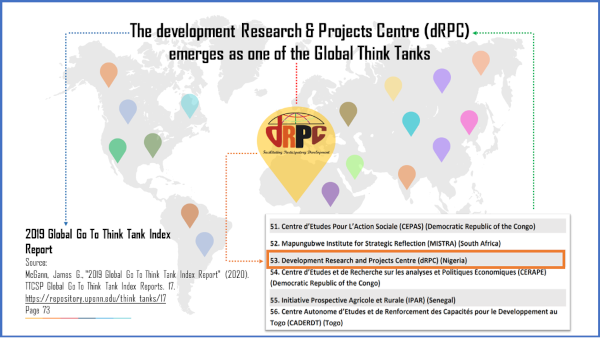People’s scorecard assessments conducted by PAS coalitions in Lagos, Kano, Kaduna and Niger States showed existence of costed implementation plans (CIPs), but poor allocation, absence of timely fund releases and challenges in governance issues still continue to undermine effective FP services in all the States.
Findings from the family planning people’s scorecard showed that Kaduna State achieved successes in governance and leadership, existence of budget line items for the procurement of contraceptive in the state annual health budget, accountability and advocacy, and state level reporting integrated into the CLMS database. However, targets were not met in the areas of timely releases of family planning funding, capacity building, number of procurement and forecast meetings conducted at state level, number of targeted state multi Media family planning advocacy and demand generation campaigns, and number of new access points for family planning services provision (hospital, clinic outreach, mobile family planning clinics and community venues where FP outreaches are conducted) in State.
The scorecard also showed that there are partial stages of success in the integration of family planning service provision into others health services (including ANC, PNC, immunization and HIV/AIDs), ℅ of health facilities offering family planning >80%, bimonthly review meetings with LGA family planning supervisors to facilitate distribution of family planning commodities conducted and financial information made available to public.
In Niger State, the annual CIP exists but allocations and releases were not commensurate with the CIP. The scorecard showed that the FP budget is over 1% of the total State Health capital budget with budget line item in place, but not specific to commodity procurement and funds were released in an irregular manner without guidelines. The RH – TWG meetings were held regularly and FP financial information was made available to the public through press statements by the Executive government in every midyear. Also, more than 2 CSOs participated in TWG meetings with only 1 CSO in the Sub-technical meetings.
In the area of capacity building, more than 75% of CHEWs have been trained on injectables with about 50 – 74% Nurses and Midwives trained on LARC while the LMCU officers were trained on contraceptives logistic management system. On supply chain management, the scorecard indicated that at least 2 procurement forecast meetings have been conducted in the State with state level reporting integrated into CLMs data base and 2 bi-monthly meetings held with LGA FP supervisors.
Findings on demand generation showed that more than 5 state and community champions were identified and at least 2 targeted state level FP multimedia advocacy and demand generation campaigns were conducted. In the area of service delivery, about 50-74% health facilities provide FP services, and between 50 to 100% of these health facilities provided integrated FP counselling and service provision. On supervision, about 50-74% supervisory visit were conducted across LGAs in Niger State in the last quarter.
In Kano State, the scorecard findings showed that there is a dedicated FP budget and also budgeted for in the State’s Saving One Million Lives workplan. The State has RHTWG that hold meetings quarterly, and there is political will for the fully implementation of CBS/FP. There are new access points for FP service provision (hospital, clinic outreach, mobile FP clinics, and community venues) where FP outreaches are conducted in the state to increase coverage and reach. The State met targets in areas such as; accountability and advocacy – existence of more than 2 CBOs in the RHTWG and publication of FP budget performance at mid and end of year. Bimonthly review meetings with LGA FP supervisors are held to facilitate the distribution of FP commodities, and plans to integrate State-level reporting into the CLMS database is ongoing. At least 2 targeted state multimedia FP advocacy and demand generation campaigns were aired in the past quarters (January to June). Between 50-100% of health facilities have integrated FP counselling and service provision into other health services. However, there is no 2020 Costed Implementation Plan (CIP) for FP, and family planning budget is less than 1 percent of state health capital budget. Also, no procurement and forecast meeting was conducted at state level in the last quarter, and less than 50% of planned supervisory visits were conducted at the LGA level in the past quarter.
Recommendations made to Kano State include: develop the 2020 CIP for FP in the State, strengthen government ownership of family planning, prioritize adequate allocation of government funds for family planning programs and ensure timely release of those funds, ensure full disbursement of funds allocated for contraceptives by identifying and addressing the causes of under expenditure, create a Family Planning Program budget line within the Department of Public Health & Disease Control of the Ministry of Health, and create a Family Planning Commodities budget line, separate from Drugs and Medicines, within the Ministry of Health development budget. Also, the State needs to improve the capacity of health workers on CBS in the State.
In Lagos State, some of the targets were met and some issues still persist. Lagos State has not released funds for family planning, indicating that funds required to transport commodities and consumables to health facilities are not available. Complete and timely release of 2020 allocation should be advocated for. There were inadequate staff skills limiting overall access to family planning. So, trainings of Nurses and Midwives and LMCU officers should be prioritized and conducted to make up for time lost to Covid-19. There is a need to identify State and community-level FP champions to promote FP awareness. To increase accessibility to family planning services, the creation of new access points for FP service provision should be considered. Lastly, efforts should be made to provide monitoring and supervision at LGA and facility levels.



